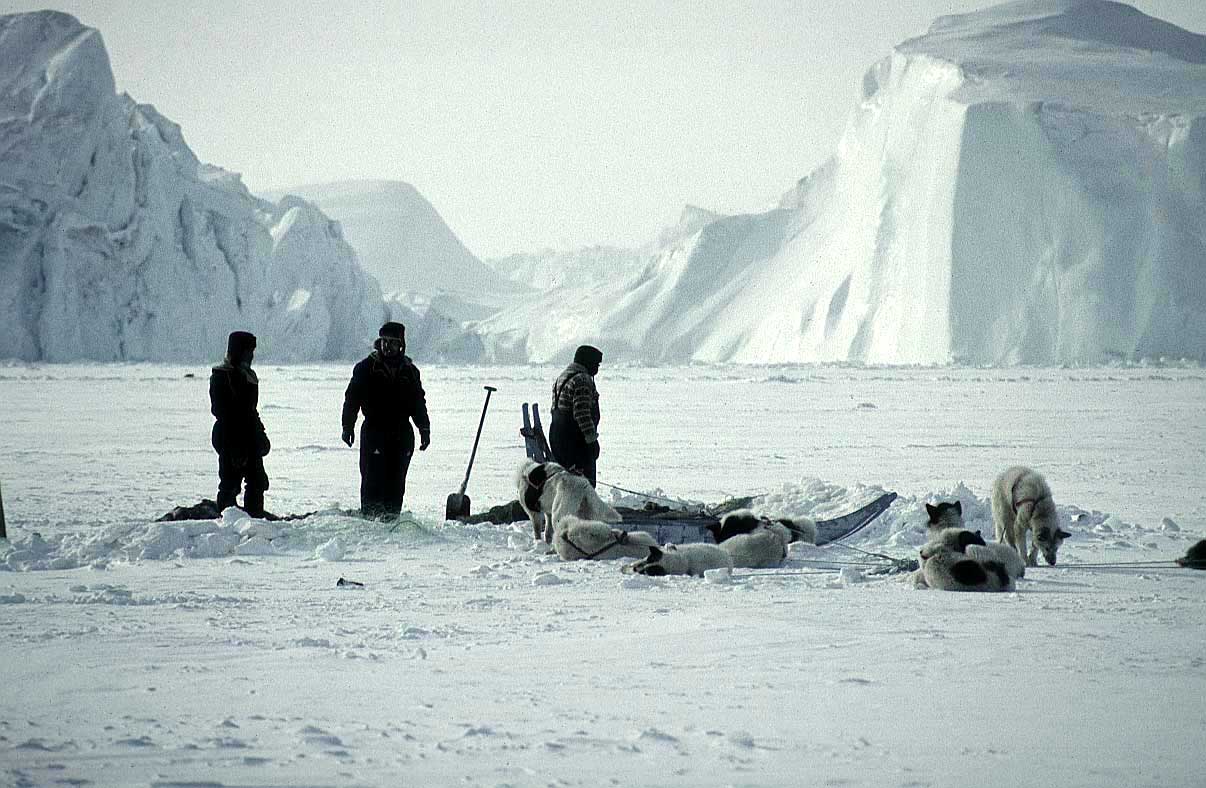1. Cold Environmental Stress
Cold weather is an environmental stress that impacts human survival by disturbing homeostasis. It puts a strain on the body to keep the 98.6F temperature by causing it to use more energy to create heat and in turn use more fuel or food in the process. Therefore more energy needs to be used for hunting or gathering in an environment that usually does not have an abundance of food. There is also the loss of sunlight which helps humans to produce vitamin D which is needed by the body to help absorb calcium among other things.

2. Adaptations to Cold Stress
Short term adaptations would be shivering or increased metabolic rate which would temporarily increase body temperature. A facultative adaptation would be switching between vasoconstriction which minimizes heat loss and vasodilation which provides warmth to the skin to prevent frostbite like what the Inuit seem to have adapted to. A developmental adaptation would be the change to a short, stocky and robust body with short limbs to help retain heat. A cultural adaptation would be the use of warm clothing and shelters while eating foods high in fats and carbohydrates to use as fuel for the body as it struggles to create heat.
3. Benefits of Study of Human Variation
The benefits of studying human variation from the perspective across general environmental clines is that we can learn much about how humans are affected by mutations, natural selection and other evolutionary effects, and potentially use it to our advantage in the future to find cures for ailments; or at least understand human variation a little better. The fact that we were able to isolate the reason for sickle-cell anemia being popular in areas where malaria was prevalent is a perfect example how we can better understand and learn about human evolution.

It would be unusual and misinforming to use race to understand the variation in adaptations. Inuit people are accustomed to live in cold temperatures, but you could then look at a similar looking race like the Chinese and assume that they have the same adaptations and be completely wrong. Studying people’s adaptations and the effects of the environments of their home regions is a better way to understand the differences among various groups of people that will give us a much clearer and complete understanding on how and why people have such unique traits across all the regions of the world.




First of all, those are wonderful images! I especially love the black and white sepia tone image of the woman by section #3. Even your layout was interesting and well presented. It's nice to see that much attention put into your post.
ReplyDeleteContent was very good as well. All points covered accurately. Good discussion on the problems with the use of race to study human variation. Good job.
By the way, what are the things on the man's eyes in the last image? What is its function?
ReplyDeleteI definitely agree with all the points you made with your responses. People should not be racial or stereotypical and assume an individual's customs according to their look. I learned a lot from your post and enjoyed the pictures as well. I really like the three little Eskimos.
ReplyDeleteAs usual, you did a wonderful job. I always enjoy reaing your posts. Your ideas are always very well thought. You go to the point and the reader can see that you have gone through a process of critical thinking. Your presentation of your posts is also very nice.I wish I knew how to do this. When I will have more time, I will check into it. Thank you for sharing your very good ideas and your work with all of us.
ReplyDeleteTo L Rodriguez
ReplyDeleteThank you very much for noticing the time I put into the post, I'm glad you enjoyed it. The last image has a man wearing the Inuit equivalent of sunglasses which protects the eyes from the reflection and glare of the snow and ice. A small slit is cut into shaped animal ivory to allow only a small amount of light into the eyes when out in the vast ice wilderness. When you live in an area that is covered in ice and snow, you could go blind with constant exposure to that kind of white out.
@Race... Thank you for the response. Interesting cultural adaptation, isn't it?
ReplyDelete